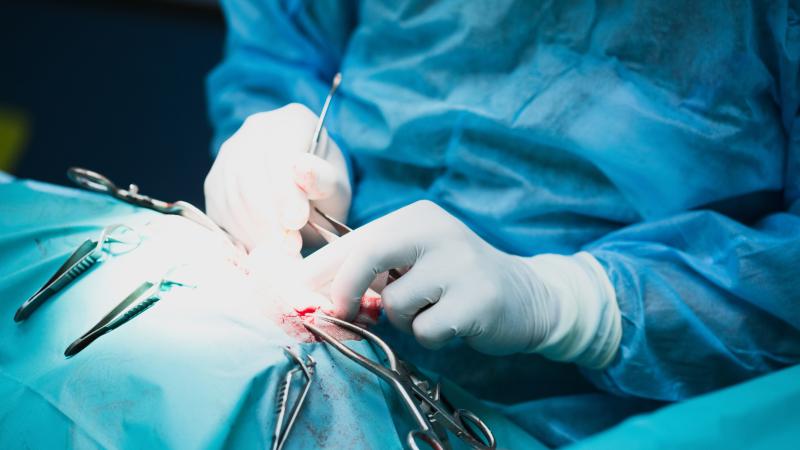Can prophylactic biologic mesh in IC prevent parastomal hernia?





Use of biologic mesh at the time of ileal conduit (IC) construction is safe and feasible in patients undergoing cystectomy but falls short of providing protective effects against parastomal hernia (PSH) within 2 years following surgery, reports a study.
“Prophylactic biologic mesh use was not associated with any intra- and/or postoperative mesh-related adverse events (AEs),” said the researchers. “Nevertheless, mesh placement did not show a protective effect within the 2 years of this study.”
A total of 146 patients who underwent cystectomy and IC at the University of Southern California, US, between 2015 and 2021 were included in this phase III trial. They were randomized to receive FlexHD prophylactic biologic mesh using sublay intraperitoneal technique or standard IC. Follow-up physical exam and CT were conducted every 4‒6 months up to 2 years.
Time to radiological PSH was the primary endpoint, while secondary ones included clinical PSH with or without surgical intervention and mesh-related complications.
The two groups had comparable baseline clinical features. No intraoperative complications occurred in all surgeries and mesh placement performed. The median operative time was 31-min longer in patients who received mesh, but no statistically significant difference was noted (363 vs 332 min; p=0.16). [J Urol 2024;211:743-753]
Over a median follow-up of 2 years, radiological PSHs occurred in 18 mesh recipients and 19 controls, and clinical PSHs in eight participants in both arms. The median time to radiological and clinical PSH was 8.3 and 15.5 months, respectively. Mesh-related AEs were not reported.
Of note, three patients in the mesh arm and two in the control arm required surgical PSH repair. Radiological PSH-free survival rates in the mesh group were 74 percent at 1 year and 69 percent at 2 years. Survival was similar in the control group, with rates of 75 percent and 62 percent, respectively.
“Longer follow-up, as well as the results of other ongoing trials on this topic, will help to better elucidate the role of prophylactic mesh in patients with IC urinary diversion,” the researchers said.
Other methods
PSH incidence following cystectomy and IC urinary diversion is high. Because of this, several methods have been used to decrease such risk, according to the researchers.
Some of these approaches included control of modifiable risk factors and specific surgical techniques, such as placing the stoma through the belly of the rectus muscle, stoma construction via extraperitoneal route, and stomal fixation to the fascia. [Colorectal Dis 2016;18:O81-O90; Cochrane Database Syst Rev 2013;11:CD009487; Urology 2014;83:1427-1431; Urology 2014;83:1427-1431]
“Nevertheless, there is insufficient evidence supporting these techniques,” the researchers said. [Hernia 2018;22:183-198]
Conversely, colorectal literature provides evidence supporting the implementation of a prophylactic mesh during stoma construction to reduce PSH incidence. [J Gastrointest Surg 2022;26:486-502]
In the urology literature, two retrospective cohort studies have reported the efficacy and safety of prophylactic mesh in patients undergoing IC urinary diversion. [Hernia 2018;22:781-784; Scand J Urol 2015;49:308-312]
However, there remains “no consensus on the most appropriate mesh material and technique for prophylactic mesh placement,” the researchers said.